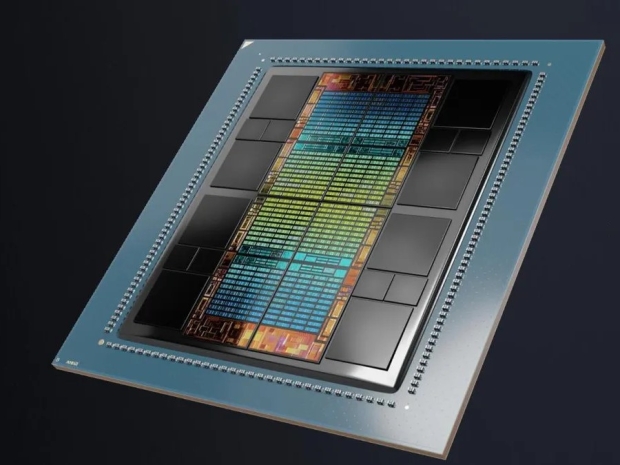The MI300A is set to power El Capitan, expected to become the world’s fastest supercomputer this year, running at two exaFLOPS.
AMD engineers collaborated on a recent paper detailing how they achieved the exaFLOPS performance.
That paper, presented at ISCA 2024, sheds light on AMD’s decision to prioritise APUs over dedicated GPUs for exascale computing, despite the MI300A’s existence being known since May 2023.
The MI300A’s development began over a decade ago when the US Department of Energy selected AMD for supercomputer research.
With the end of Moore’s Law in sight, AMD focused on creating a scalable APU, leading to the “Exascale Heterogeneous Processor” project. This project manifested in Frontier, the world’s first supercomputer to reach one exaFLOPS.
Although Frontier succeeded, it didn’t fully realise AMD’s EHP plans, as it used dedicated MI250X graphics accelerators instead of an all-in-one APU, the paper said.
This compromise was necessary to meet deadlines, as AMD’s V-Cache stacking technology wasn’t ready. The third EHP revision required stacking HBM modules on every GPU chiplet, delaying the implementation.
The paper said that eventually, 3D V-Cache technology matured, allowing the final push for the EHP project. The MI300A, based on the EPYC processor architecture, features a unified Infinity Fabric memory bus, enabling transfer times measured in TB/s between graphics and processing cores.
The MI300A boasts 24 Zen 4 x86 CPU cores, 228 CDNA 3 GPU compute units, and 128 GB of unified HBM3 memory, all integrated into 4th-gen Infinity architecture. Its impressive specs include a peak memory bandwidth of 5.3 TB/s and a theoretical peak AI performance of 3922 TFLOPS.
In benchmarks, the MI300A significantly outperforms the MI250X, with results 1.25x to 2.75x faster. This performance boost validates AMD and the Department of Energy’s decision to pursue the EHP project.




